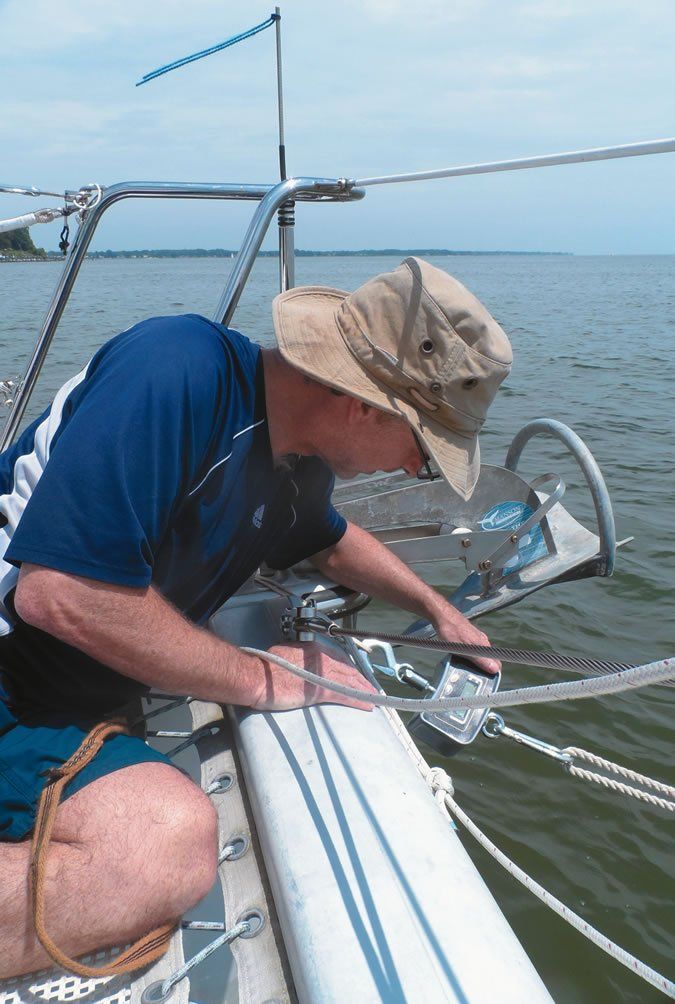What's the elasticity of the Dyneema? With nylon running @ around 30% there's little to no shock as the boat comes up tight on the tackle. Strength is not what I'm looking for in a snub line, but rather elasticity so that strength becomes secondary.I spliced my own dyneema loops (sling) for this purpose, and use them to form a prussik knot on the anchor rode and attach the loops with a large stainless spring-gated hook on the bridle/snubber lines. (1/4" dyneema has a breaking strength >5,000 pounds)
The hooks I use are more reliable than the D-shackle @thinwater shows, and quick to use one-handed. I use the largest size Wichard snap hook (it has a 3168 pound WLL)
This works on chain or rope rode, I use more than one loop wrap on the prussik when using rope rode, to avoid slippage.

In your post it seems you are adding a weak link in the whole setup, even with the largest size Wichard snap hook, that is still thousands of pounds inferior to the Dyneema.



